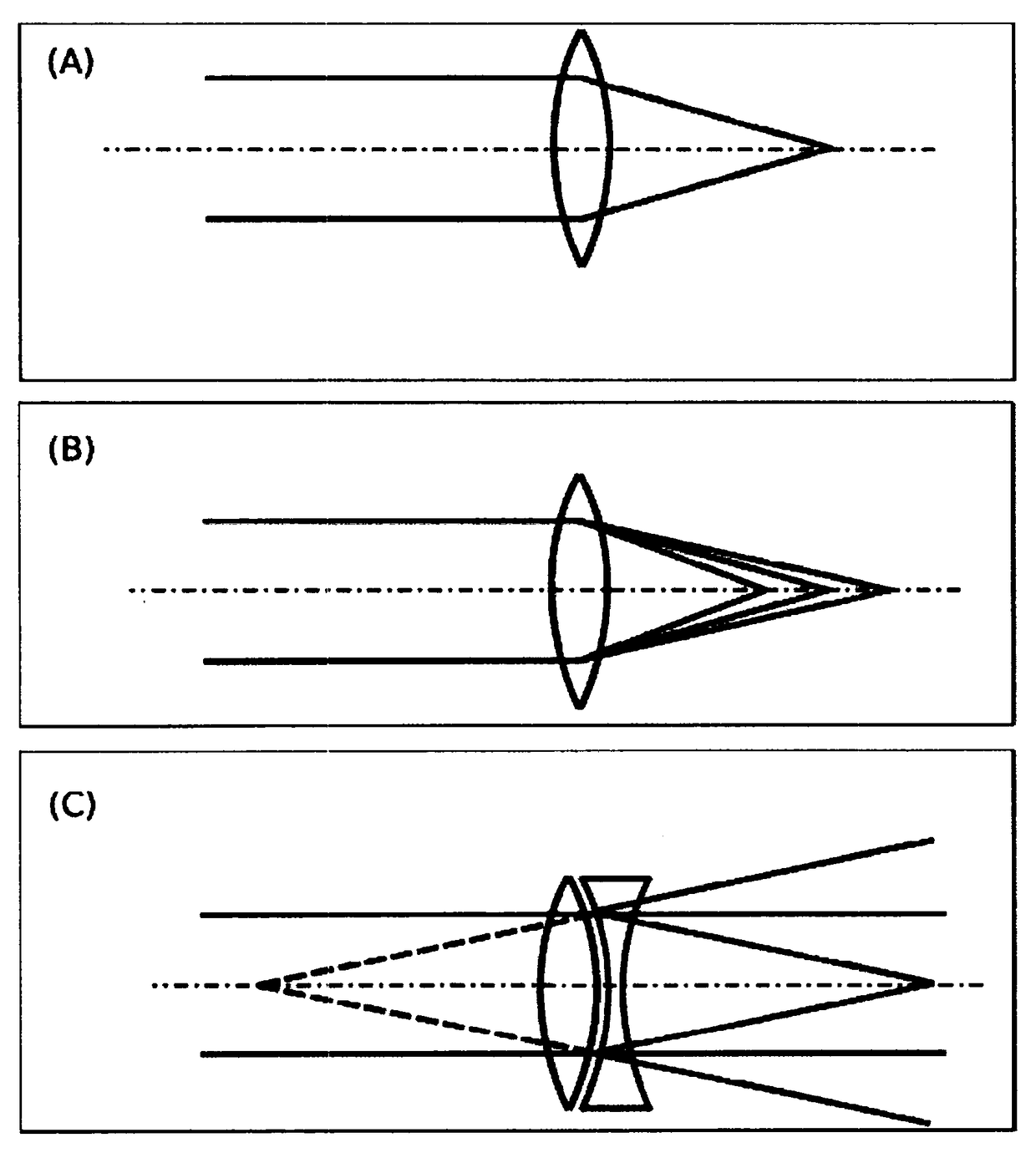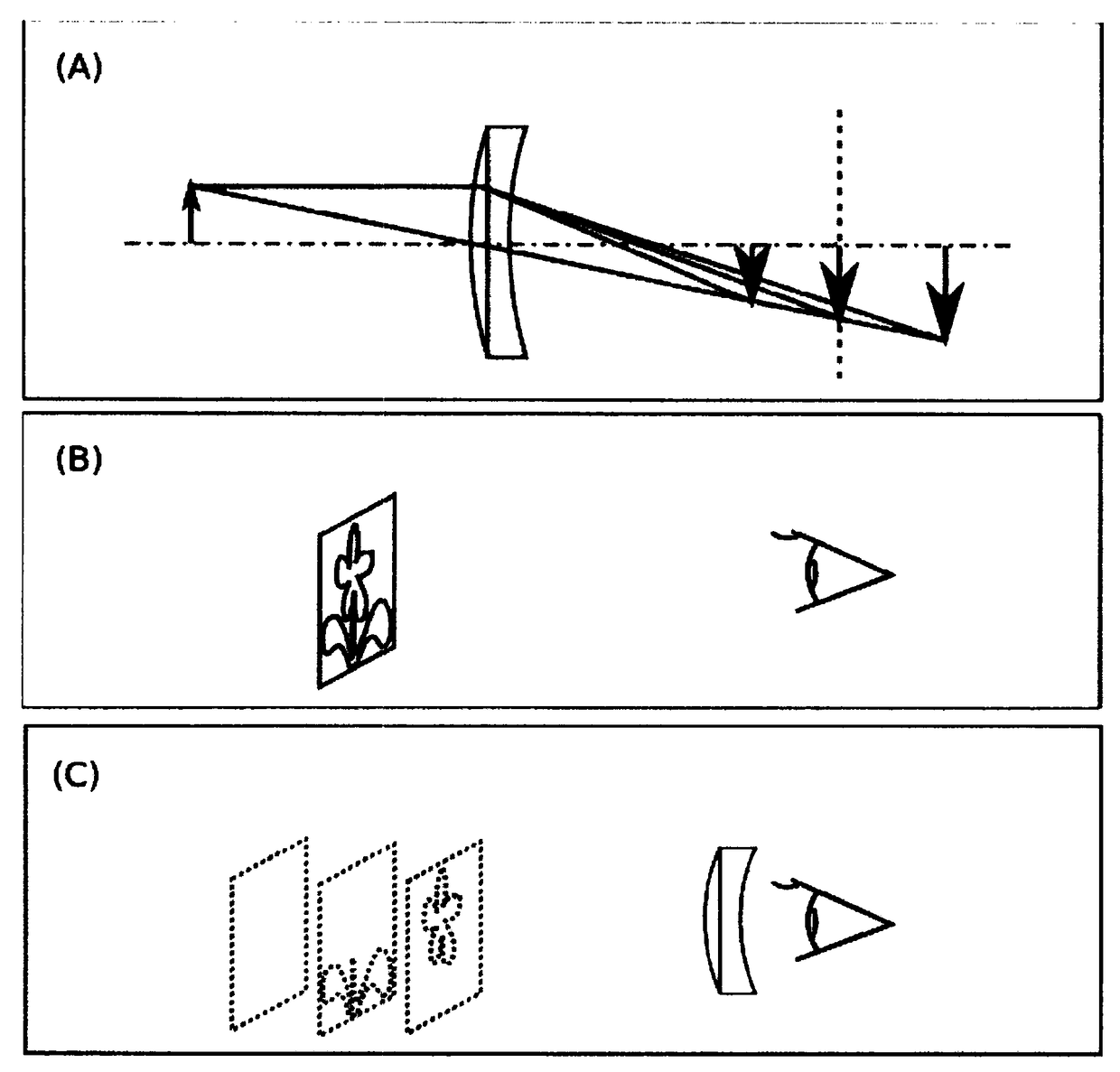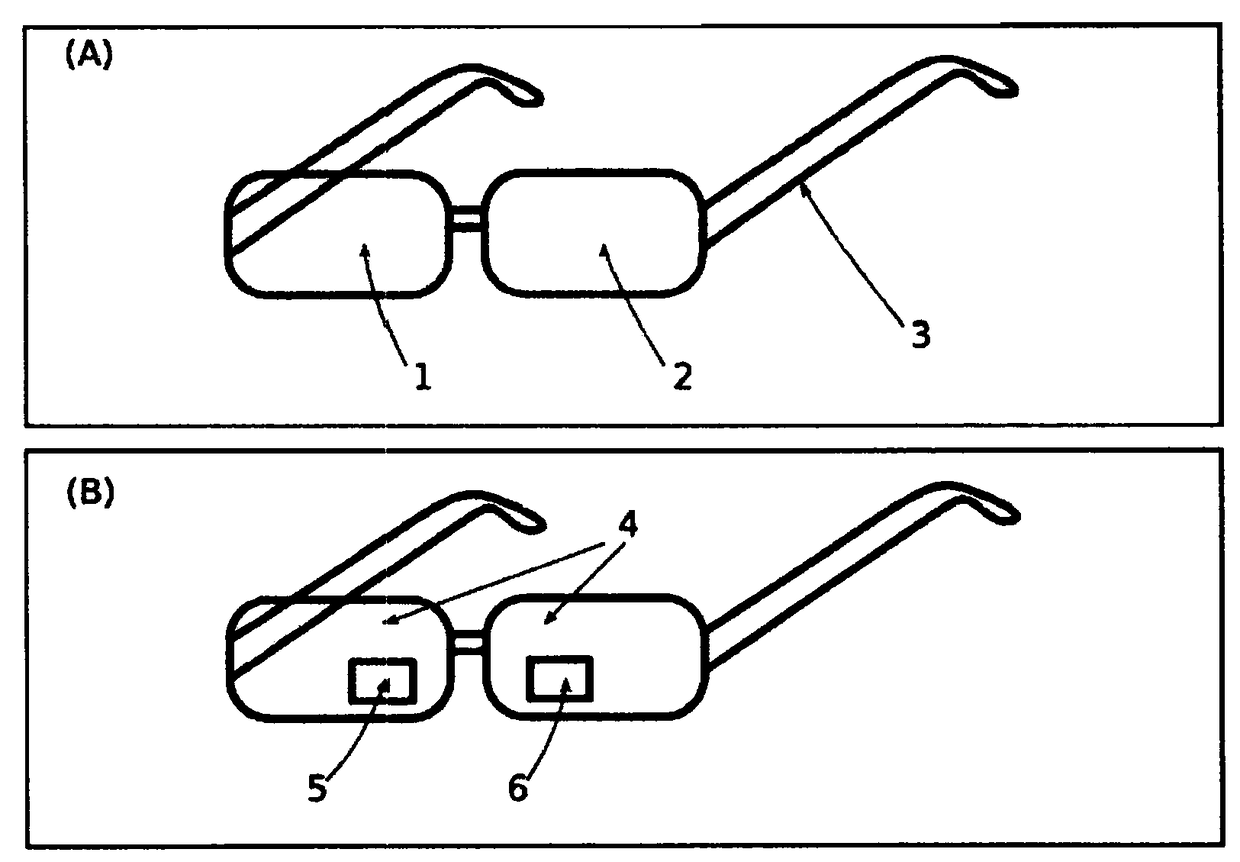Optical system for color enhancement
An optical system and color enhancement technology, applied in the field of visual optics, which can solve the problems of confusion, color blindness, invalid color and black gray, and limited effect of color discrimination auxiliary technology.
- Summary
- Abstract
- Description
- Claims
- Application Information
AI Technical Summary
Problems solved by technology
Method used
Image
Examples
Embodiment 1
[0067] Taking a user with normal vision (no distance or nearsightedness) wearing color blindness auxiliary glasses as an example, the specific implementation method is as follows:
[0068] 1.1. Known high-dispersion and low-dispersion materials are SCHOTT's heavy lanthanum flint (LaSF9) and fluorine crown (FK51A) optical glass, and their refractive indices at characteristic wavelengths are:
[0069] Color, wavelength (nm)
Red, 650
Yellow, 575
Green, 530
Bi, 493
Blue 460
LaSF9 refractive index
1.8432
1.8520
1.8594
1.8673
1.8763
1.4849
1.4869
1.4886
1.4902
1.4920
[0070] Table 1. The refractive index of optical glass at characteristic wavelength
[0071] 1.2. Make a high-dispersion convex lens and a low-dispersion concave lens to form a compound lens, the method is as follows. Take some D around 10 1 Value, use formula (13) to get E 1 ; Because of E 1 >0, knowing from formula (9) In formula (5), let the convex radian of one side of the convex lens be R 1A =R A...
Embodiment 2
[0087] Take a specific user with a myopia of 200 degrees wearing color blindness auxiliary glasses as an example, the specific implementation method:
[0088] 2.1, same as Example 1.1.
[0089] 2.2, as in Example 1.2, make a composite lens composed of a high-dispersion concave lens and a low-dispersion convex lens. The method is as follows. Take some D around -10 1 Value, use formula (13) to get E 1 ; Because of E 1 Formula (19) for myopia is 200 (the focal length of myopia glasses is f 0 = -0.5m) user becomes
[0090]
[0091] Put (22) into the first and third lines of (18) to get with About R A And put the result into the critical equations (20) and (21) and obtain two R A Value, and take the R that makes the high dispersion condition (6) hold A ; Use formula (22) to obtain R from A Calculation of R B ; Finally, a new lens radian value table for 200 degrees myopia is obtained, where the positive (negative) sign indicates the convex (concave) lens.
[0092] D1
-5
-10
-15
-20
E 1 (...
Embodiment 3
[0097] With no farsightedness, myopia (f 0 =∞) and the final optometry result is left eye dispersion D 1 = 10, right eye D 1 For example, a user with =5 wearing color blindness assist glasses, the specific implementation method is:
[0098] 3.1, same as Examples 1.1 to 1.3, a batch of f was obtained 0 =∞ and different D 1 The high dispersion lens.
[0099] 3.2. Cut these high-dispersion lenses into suitable sizes to make spectacle lenses. These spectacle lenses can be easily installed on spectacle frames specially used for optometry, and can also be easily removed for replacement.
[0100] 3.3, so that the left and right lenses of the glasses have the same D 1 , And obtain the user's eyes D according to Example 1.5 1 The best value is 10 at the same time.
[0101] 3.4. Keep the left lens of the glasses unchanged, and replace the D of the right lens separately 1 , Allowing users to perform color discrimination test and experience feedback according to the second step of the invention (...
PUM
 Login to View More
Login to View More Abstract
Description
Claims
Application Information
 Login to View More
Login to View More - R&D
- Intellectual Property
- Life Sciences
- Materials
- Tech Scout
- Unparalleled Data Quality
- Higher Quality Content
- 60% Fewer Hallucinations
Browse by: Latest US Patents, China's latest patents, Technical Efficacy Thesaurus, Application Domain, Technology Topic, Popular Technical Reports.
© 2025 PatSnap. All rights reserved.Legal|Privacy policy|Modern Slavery Act Transparency Statement|Sitemap|About US| Contact US: help@patsnap.com



